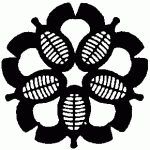This summary is about the morning practice in Almere.
What with tomorrow’s dutch national championships being right around the corner, obviously we spent some time on practice shiai. Aside from that class followed its usual structure.
Kata practice was very cool, because today we introduced five of our newbies to the first kata. Until now they’d been doing footwork practice and suburi before warming up, while the rest practiced kata. No more! They spent twenty minutes practicing the shidachi (受太刀) side of kata #1, first as a group and then one-on-one with experienced kendoka.
After warming up we spent roughly fifteen minutes footwork practice: okuri ashi. First with normal slides, then with intervals (small-normal-large), then with fumikomi. Eight laps in total. We’ve discussed the most common mistakes:
- Left overstepping right
- “Horse stepping” with the right foot
- The power of fumikomi driving upwards instead of forwards
Seiretsu was followed by kihon practice, where the beginners are again teamed up against motodachi in bogu. Sadly I cannot report on the exercises performed as there was a small, medical emergency to attend to. When the beginners joined the newbies with Ton-sensei, those in bogu (ten or evelen in total) practiced kihon and waza: chisai kote-men, chisai men, ai-men and kaeshi-do, followed by six rounds of ippon shobu jigeiko.
In practicing kaeshi-do Kris-fukushou explained that the do strike actually does not involve a step, but only fumikomi. You receive and parry the attacking strike in place and then strike do while doing fumikomi, standing in the same spot. You then finish your counter by moving forwards and showing zanshin. Of course, “standing in place” does not equal simply standing there and slapping a strike on do! No, you have to show proper attitude and aggression, you have to show intent and zanshin, and your strike should be technically perfect.
The shiai geiko was done with two teams. Every kendoka received some individual pointers from the teachers, to help them in their fights tomorrow. We were also advised to prepare properly for tomorrow: sleep early and well, don’t practice too hard the day before, check all your armor and shinai (repair any splinters etc), make sure you are properly dressed and make a good impression.Dit verslag gaat over de ochtendles in Almere.
Het NK kendo staat voor de deur, dus we hebben vanzelfsprekend aandacht besteed aan shiai. Buiten dat verliep de les als normaal.
De kata oefeningen waren vandaag speciaal omdat we vijf van onze newbies hun eerste kata lieten doen. Tot nu toe hielden zij zich aan het begin van de les bezig met voeten werk en suburi, maar nu niet meer! Ze oefenden de shidachi (受太刀) zijde van kata #1, eerst als groep en daarna één-op-één met ervaren kendoka.
Na de warming up besteedden we een kwartier aan voetenwerk oefeningen: okuri ashi. Eerst met gewone slipstappen, daarna met intervallen (klein-normaal-groot), daarna met fumikomi. In totaal acht rondes rond de zaal. Zoals eerder bespraken we weer de vaak geziene fouten:
- Links stapt voorbij rechts
- Hoog opstappen met rechts (“paardenstap”)
- De kracht van fumikomi duwt opwaarts in plaats van voorwaarts.
Seiretsu werd gevolgd door kihon oefeningen waarbij de beginners weer tegenover motodachi in bogu stonden. Helaas kan ik niet zeggen wat er is geoefend omdat ik bij een klein noodgeval moest helpen. Nadien sloten de beginners zich weer aan bij Ton-sensei en hen in bogu (tien of elf in totaal) deden kihon en waza: chisai kote-men, chisai men, ai-men en kaeshi-do, gevolgd door zes rondes ippon shobu jigeiko.
Bij het bespreken van kaeshi-do vertelde Kris-fukushou dat de do slag eigenlijk zonder stap, maar met fumikomi wordt gemaakt. Je ontvangt en parreert de aanvallende slag op de plaats en slaat do met fumikomi terwijl je blijft staan. Daarna maak je het af door voorwaarts te bewegen en zanshin te tonen. Vanzelfsprekend betekent “staand op de plaats” niet dat je als een zoutzak staat te wachten en dan maar eventjes do mept. Nee, je moet de juiste instelling en agressie tonen, je moet intentie en zanshin tonen en je slag moet technisch perfect zijn.
De shiai geiko werd in twee teams uitgevoerd. Elke kendoka kreeg persoonlijke tips en verbeterpunten mee van de leraren. We werden allemaal geadviseerd om goed voorbereid naar een toernooi te trekken. Train niet te hard de dag van tevoren, ga op tijd slapen, controleer je volledige bogu en je shinai (repareer ze goed), zorg dat je netjes voor de dag komt en maak een goede indruk.

